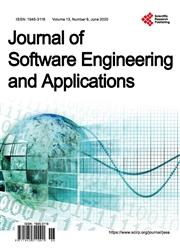Feedback Control of Medication Delivery Device Using Machine Learning-Based Control Co-Design
引用次数: 0
Abstract
Although the opioid crisis is a problem worldwide, recent emerging technology has the potential of curtailing the epidemic. By administering micro-doses of medication as needed, a feedback-driven medicine pump could les-sen the highs and lows associated with the formation of an addiction. The focus of this study was to develop a feedback control loop for this pump that optimizes drug concentration in the bloodstream based on set criteria. In the process of optimization of the system, the mathematical model representing the system was analyzed to find an open loop transfer function. Using this function, a PID tuner was applied to set feedback control. Both machine learning (ML) and deep learning (DL) techniques are explored to act as a classifier that aids the pump in administering doses. The setpoint concentration of medication in the patient’s bloodstream was calculated to be 7.55 mg/ml this setpoint was the basis for steady state concentration of the transfer function. When a PID tuner was added to the feedback system, the plot was optimized to satisfy the design criteria of a rise time less than 25-minutes and no more than a 5% overshoot of the setpoint concentration. Naïve Bayesian (NB), Tree and support-vector machines (SVM) classifiers achieved the best classification accuracy of 100%. A DL network was successfully developed to predict patient class. This work is the theoretical basis for developing a feedback-driven medicine pump and an algorithm that can classify patients based on their body’s metabolism that will aid the doctor in formatting the medicine pump so that the patient is receiving the proper amount of medication.基于机器学习控制协同设计的给药装置反馈控制
虽然阿片类药物危机是一个全球性问题,但最近出现的技术有可能遏制这一流行病。通过根据需要给予微剂量的药物,反馈驱动的药物泵可以减少与成瘾形成相关的高潮和低谷。本研究的重点是为该泵开发一个反馈控制回路,根据设定的标准优化血液中的药物浓度。在系统优化过程中,分析了系统的数学模型,找到了一个开环传递函数。利用此函数,应用PID调谐器进行整定反馈控制。探索机器学习(ML)和深度学习(DL)技术作为分类器,帮助泵管理剂量。计算出患者血流中药物的设定值浓度为7.55 mg/ml,该设定值是传递函数稳态浓度的基础。当在反馈系统中加入PID调谐器时,该图被优化为满足上升时间小于25分钟且不超过设定点浓度超调5%的设计标准。Naïve贝叶斯(NB)、树(Tree)和支持向量机(SVM)分类器的分类准确率最高,达到100%。成功地开发了一个深度学习网络来预测患者类别。这项工作为开发反馈驱动的药物泵提供了理论基础,并为开发一种算法提供了理论基础,该算法可以根据患者的身体代谢情况对患者进行分类,从而帮助医生对药物泵进行格式化,使患者获得适当的药物量。
本文章由计算机程序翻译,如有差异,请以英文原文为准。
求助全文
约1分钟内获得全文
求助全文

 求助内容:
求助内容: 应助结果提醒方式:
应助结果提醒方式:


